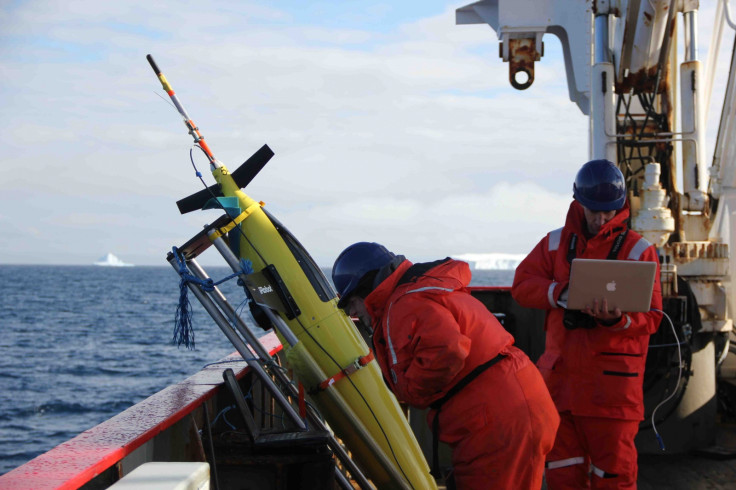Underwater Robot Dolphins Used to Study How Shrinking Antarctic Glaciers Are Melting

We know that global warming is behind the melting of the polar ice caps, but how exactly is it happening?
Scientists from the California Institute of Technology (Caltech), University of East Anglia and GEOMAR Helmholtz Centre for Ocean Research have been using robotic dolphins that can swim underwater over the last two years to study exactly how warm water is reaching the Antarctic region to melt polar ice slabs.
"When you have a melting slab of ice, it can either melt from above because the atmosphere is getting warmer or it can melt from below because the ocean is warm," said Andrew Thompson, assistant professor of environmental science and engineering, who led the study.
"All of our evidence points to ocean warming as the most important factor affecting these ice shelves, so we wanted to understand the physics of how the heat gets there."
Usually, marine biologists have to sail on ships close to the area they want to study and then lower instruments into the water on-site, or use satellites to collect ocean temperature data.
Unfortunately these methods were not possible in the Southern Ocean off the coast of the Antarctic Peninsula, where warm water is not near the surface of the sea so it can't be picked up by satellites, and the area is very hard to reach by ship.
Traditional research methods don't work
"If it was only temperature that determined density, you'd always have warm water at the top and cold water at the bottom. But in the ocean you also have to factor in salinity; the higher the salinity is in the water, the more dense that water is and the more likely it is to sink to the bottom," said Thompson.

"That's an additional problem in understanding the heat transport in this region. You actually need to be taking a look at that very warm temperature layer, which happens to sit in the middle of the water column. That's the layer that is actually moving toward the ice shelf."
So the researchers worked with robotics firm iRobot to create the Caltech Seaglider – a 6ft-long bullet-shaped robot which costs $240,000 (£151,300) that can glide through the water for several hours with no propeller, instead using batteries to power a pump that changes the glider's buoyancy by pushing water in and out of a compartment inside the glider.
The team waited on land and every few hours, the robot gliders would make contact with the researchers using a wireless device on its tail that is similar to a mobile phone.
The researchers' findings, entitled "Eddy transport as a key component of the Antarctic overturning circulation", are published in the journal Nature Geoscience, and show that swirling ocean eddies are to blame.
Ocean eddies to blame for melting ice caps
Ocean eddies are a natural phenomenon where tonnes of swirling water transports and mixes fluids in the ocean.
"Ocean currents are variable, and so if you go just one time, what you measure might not be what the current looks like a day later. It's sort of like the weather—you know it's going to be warm in the summer and cold in the winter, but on a day-to-day basis it could be cold in the summer just because a storm came in," said Thomson.
"Eddies do the same thing in the ocean, so unless you understand how the temperature of currents is changing from day to day—information we can actually collect with the gliders—then you can't understand what the long-term heat transport is."
The researchers' findings are crucial as they will help the global scientific community figure out just how rapidly the ice is melting, and therefore how quickly sea levels will rise.
The team next plan to use a new type of robotic glider which stays on the surface of the water, called a Waveglider, to study the Drake Passage between the southern tip of South America and Antarctica.
© Copyright IBTimes 2025. All rights reserved.






















